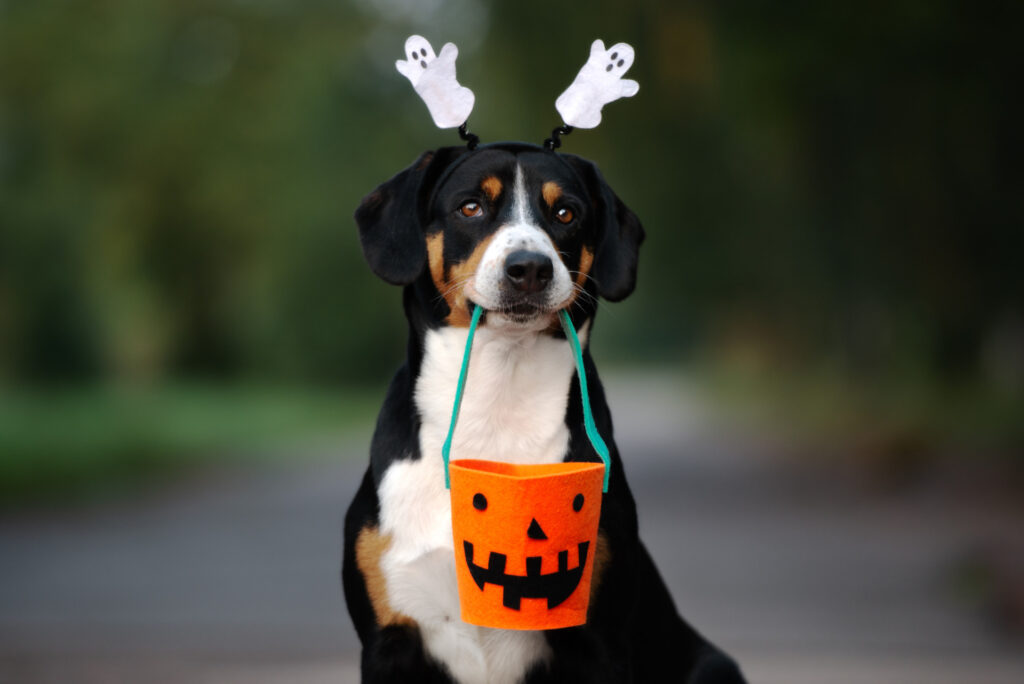Avoid a night of fright for your dogs
Dog owners encouraged to be aware of potentially toxic seasonal items
October is filled with treats that can make pet safety tricky. Candy, food, drinks and decorative items rank among the spookiest of scares for pets. As such, the Texas A&M Veterinary Medical Diagnostic Laboratory, TVMDL, is encouraging dog owners to take note of the seasonal items that can pose health concerns.

Catherine Campbell, DVM, veterinary diagnostician at TVMDL’s College Station laboratory, advises dog owners to be vigilant in the frights and delights present in homes this Halloween season.
Food and drink concerns
Overindulgence in a trick-or-treater’s bounty can lead to spooky consequences in children; however, candy can be especially harmful if ingested by dogs.
“Chocolate toxicity can be a big issue amongst dogs,” Campbell said. “Toxicity tends to be based on the amount and type of chocolate consumed. Dark chocolate is much more of a problem than milk chocolate.”
Methylxanthines in chocolate can cause gastrointestinal and cardiac issues and, in severe cases, seizures. Chocolate with a higher cocoa content, such as dark chocolate and baking chocolate, contains higher concentrations of methylxanthines than its milky counterpart. Xylitol is another chemical of concern, often found in sugar-free candies, gum and drinks. When ingested in high enough quantities, xylitol can cause hypoglycemia and liver failure.
Though raisins are a healthier treat option for little ghouls and goblins, Campbell warns of their potential toxicity for some dogs. Small amounts of raisins can lead to kidney damage. Similar fruits, like grapes and currants, also have the same effect.
In addition, Campbell warns that Halloween spirits of the liquid variety are also a potential source of toxicity, as alcohol can cause vomiting, diarrhea, depression of the central nervous system, coma and death in dogs.
Decorative item concerns
Decorations add to a home’s ghostly greetings but can also be dangerous if consumed by dogs.
“If ingested in large amounts, that foggy dry ice in your frightful décor can be harmful,” Campbell said. “In addition to oral irritation, dry ice can also cause lethargy, weakness, nausea and vomiting.”
Rotting pumpkins are another potential concern. Following the season’s festivities, dispose of old, moldy pumpkins, which can trigger gastrointestinal issues if consumed.
Work with a veterinarian
Owners who suspect their dog consumed a potentially toxic item should immediately contact their veterinarian. Working with a referring veterinarian, TVMDL can assist dog owners in assessing kidney or liver damage.
For more information about TVMDL’s test offerings, visit https://tvmdl.tamu.edu or call the College Station laboratory at 888-646-5623.
This story was written by Mallory Pfeiffer with the Texas A&M Veterinary Diagnostic Laboratory.





